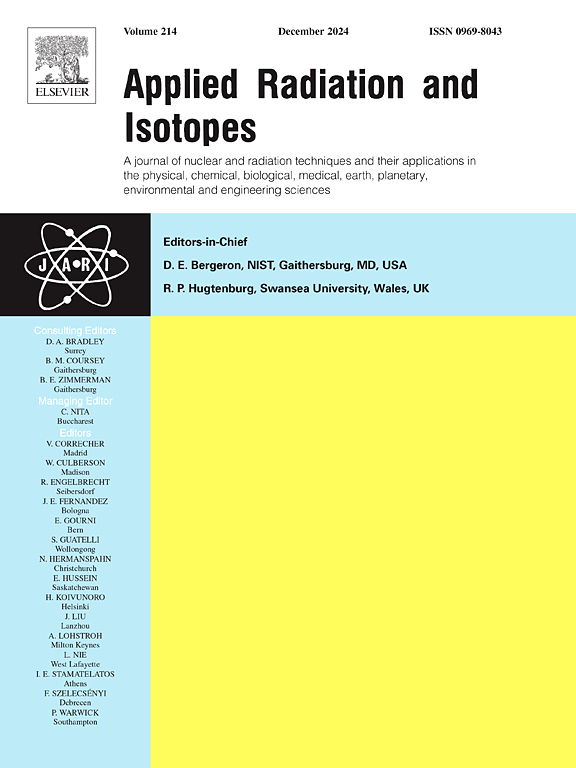A methodology study for sodium quantification in bone and soft tissue based on in vivo neutron activation analysis using a two-compartment model
IF 1.6
3区 工程技术
Q3 CHEMISTRY, INORGANIC & NUCLEAR
引用次数: 0
Abstract
Sodium (Na) is an essential mineral for human health regulation and in excess has been associated with many diseases. Its storage has been found in rapidly (soft tissue) and slowly exchangeable pools (bone) in human body. However, Na concentration and metabolism information in human bone and soft tissue cannot be determined using conventional biological urine and blood samples. The aim of this study was to apply a transportable neutron generator based in vivo neutron activation analysis technique to separately quantify Na in bone and soft tissue. Two pigs were fed with low and high Na diet to investigate the effects of dietary Na intake on Na storage and metabolism. The emitted gamma rays from Na activated by thermal neutron capture reaction in pig leg were collected using a high purity germanium detector. A biokinetic model based on internal dosimetry theorem was developed to obtain the bone and soft tissue Na concentration, as well as half-life of Na retention in the two compartments. The results show that soft tissue Na concentration was significantly higher in the pig that received a high Na diet . In contrast, the bone sodium concentration was not affected by dietary intervention . The developed methodology is capable of effectively measuring altered Na levels resulting from dietary Na consumption, with great potential in exploring the association between Na intake and health outcomes such as hypertension.
求助全文
约1分钟内获得全文
求助全文
来源期刊

Applied Radiation and Isotopes
工程技术-核科学技术
CiteScore
3.00
自引率
12.50%
发文量
406
审稿时长
13.5 months
期刊介绍:
Applied Radiation and Isotopes provides a high quality medium for the publication of substantial, original and scientific and technological papers on the development and peaceful application of nuclear, radiation and radionuclide techniques in chemistry, physics, biochemistry, biology, medicine, security, engineering and in the earth, planetary and environmental sciences, all including dosimetry. Nuclear techniques are defined in the broadest sense and both experimental and theoretical papers are welcome. They include the development and use of α- and β-particles, X-rays and γ-rays, neutrons and other nuclear particles and radiations from all sources, including radionuclides, synchrotron sources, cyclotrons and reactors and from the natural environment.
The journal aims to publish papers with significance to an international audience, containing substantial novelty and scientific impact. The Editors reserve the rights to reject, with or without external review, papers that do not meet these criteria.
Papers dealing with radiation processing, i.e., where radiation is used to bring about a biological, chemical or physical change in a material, should be directed to our sister journal Radiation Physics and Chemistry.
 求助内容:
求助内容: 应助结果提醒方式:
应助结果提醒方式:


